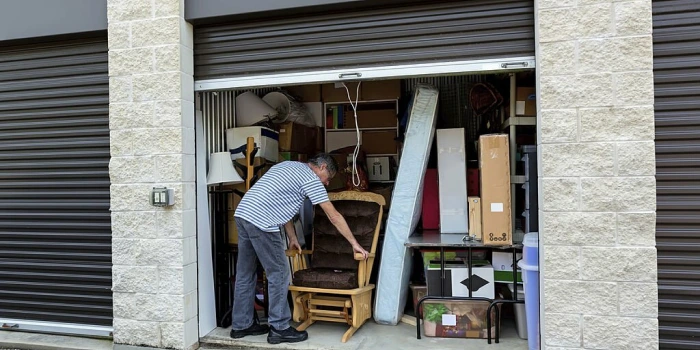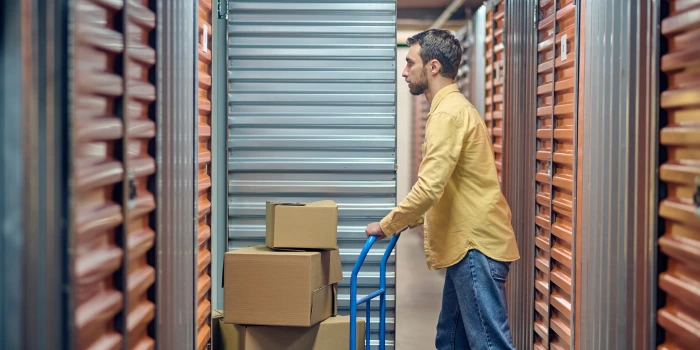How Do I Protect My Belongings In A Storage Unit?

From family heirlooms to official documents, each item deserves the utmost care. In this comprehensive guide, we'll explore the best practices for safeguarding your belongings in a storage unit, so they remain secure and in the same condition as when you stored them.
Understanding the Risks
Storing items in a storage unit comes with some risks. Theft, although rare in well-managed facilities, is a concern. Environmental damage, such as exposure to extreme temperatures, humidity, or flooding, can harm sensitive items.
Pest infestations can also damage textiles and paper products, while accidental damage can occur during handling or due to poor packing.
Knowing these risks will help you make informed decisions about the facility you want to store your items at.
Choosing the Right Storage Unit
The choice of storage facility and unit type plays a crucial role in the safety of your belongings. Look for a facility with a strong reputation for security and customer service. Consider the following:
- Climate Control: Essential for items sensitive to temperature or humidity changes.
- Security Measures: Facilities with surveillance cameras, gated access, and on-site staff offer better protection against theft and vandalism.
- Location: Choose a facility in a low-risk area, away from flood zones or high-crime neighborhoods.
- Insurance: Check if the facility offers insurance options or if your homeowner’s policy covers items in storage.

Packing and Organizing Tips
Here’s how you can keep your belongings safe in a storage unit!
Materials
Start by choosing the right packing materials. Sturdy boxes of various sizes can accommodate different items, while bubble wrap provides excellent cushioning for delicate items.
For larger items like furniture, consider using furniture covers or moving blankets to protect against scratches and dust. Using quality materials not only protects your items but also maintains their condition during storage.
Labeling
Proper labeling is a game-changer in storage organization. Label each box with a description of its contents and any special handling instructions. This not only helps in locating items quickly but also alerts anyone handling the boxes about fragile contents.
Consider using color-coded labels or numbered systems for easier tracking, especially if you have many items.
Placement
How you place items in your storage unit is also important. Heavier items should be stored at the bottom to prevent them from crushing lighter, more fragile items. Stack boxes in a stable manner and avoid piling them too high to prevent toppling.
Make sure there are clear aisles for access to all items, and avoid blocking vents or doorways.
Fragile Items
Delicate items require special care. Wrap each fragile item individually in bubble wrap or packing paper. Store these items in sturdy, clearly marked boxes to prevent them from being placed under heavier objects.
Additionally, consider placing them on shelving units inside the storage unit for extra protection.
Furniture
If possible, dismantle furniture to save space and reduce the risk of damage. Remove legs from tables, disassemble bed frames, and take apart any other large items that can be broken down.
Wrap each component in protective covers and label them accordingly. Store screws and small hardware in labeled bags and tape them to the furniture they belong to, ensuring easy reassembly.
Regular Maintenance and Checks
Consistent and thorough checks of your storage unit play a critical role in ensuring the safety and preservation of your stored items. Here’s how to conduct these checks:
Regular Inspections:
Schedule regular visits to your storage unit – monthly or quarterly, depending on what you have stored and how valuable or sensitive the items are. During each visit, conduct a comprehensive inspection of your unit.
Water Damage and Moisture:
Inspect your belongings, especially boxes and furniture, for signs of water damage. This could include water stains, warping, or mold growth. Check the ceiling and walls of the unit for leaks or damp spots. Additionally, be vigilant for signs of excessive moisture like condensation on the inside of the unit, which can be a sign of humidity issues.
Pest Surveillance:
Keep an eye out for any evidence of pests, such as droppings, nesting materials, or actual insects and rodents. Pests can cause significant damage to items, particularly textiles and paper products. If you notice signs of pests, notify the storage facility so they can take appropriate pest control measures.
Conclusion Safeguarding your belongings in a storage unit requires careful consideration and proactive measures. From choosing the right facility and packing materials to regular maintenance and additional security measures, each step plays a vital role in the protection of your items.
If you’re looking for a reliable and secure storage solution, Master Storage 365 stands out. Our state-of-the-art facilities, complete with climate-controlled storage units and advanced security systems, not only store your belongings but also keep them safe.. Visit us to experience the gold standard in storage solutions and let us help you protect what matters most.
